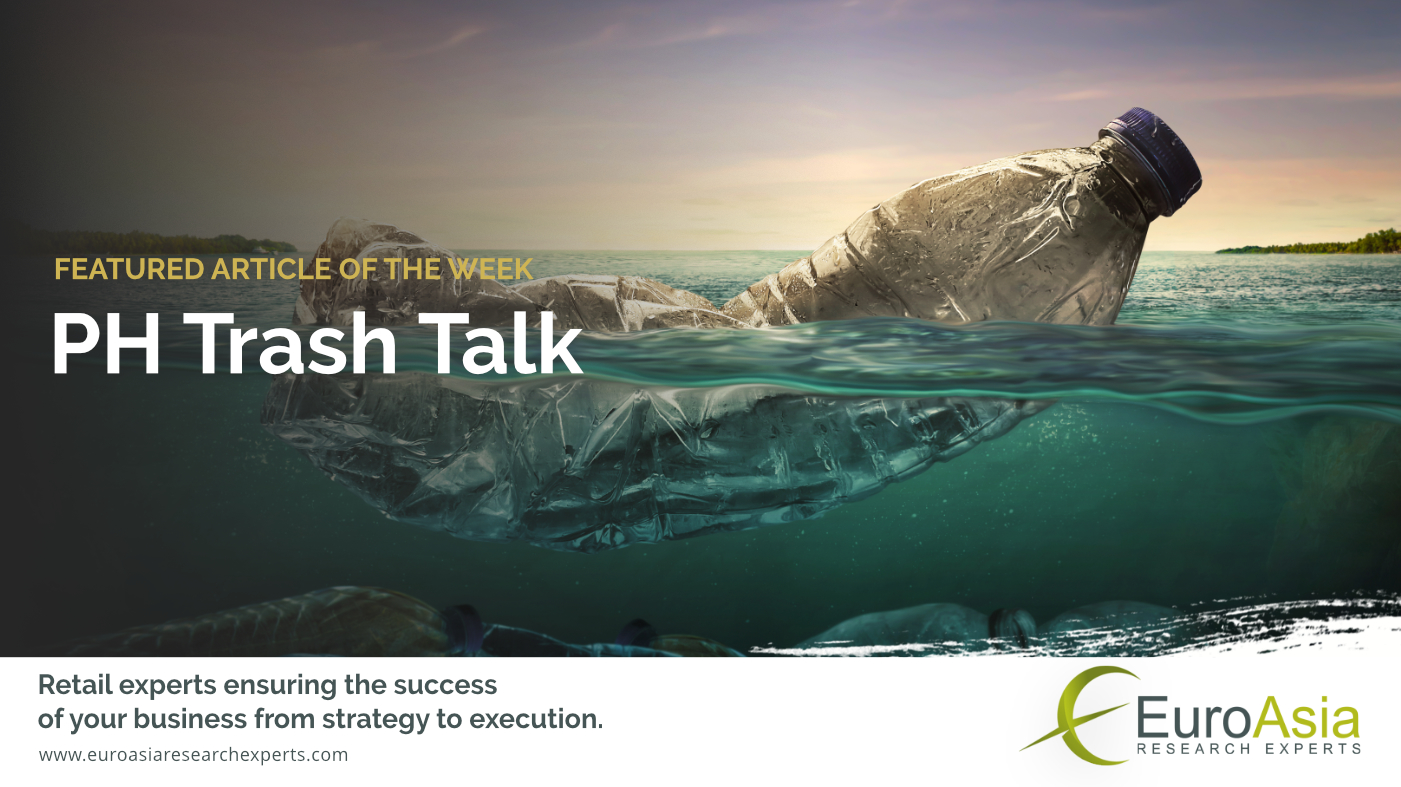
In 2015, the International Group Ocean Conservatory and McKinsey Center for Business & Environment ranked the Philippines as the 3rd biggest contributor to plastic waste that goes into worldwide seas.
This translates to the earth-shaking figures below.

based on 21 waste assessments conducted in 6 cities and 7 municipalities in the Philippines.
The research illustrates that a year’s worth of sachets can cover the entire Metro Manila one foot deep in plastic waste.
If that is not alarming enough, then the entire nation will literally be underneath a big pile of trash.
How can we be part of the solution? Taking small steps to cut down on plastic use every day may start out as tiny ripples that can become gigantic waves with immeasurable impact on the environment.

The potential of not using any plastic for an entire month may sound impossible — and unfortunately, it pretty much is. But let it not stop you from trying. Instead, it’s all about being part of the solution in a way that works for your lifestyle — while still naturally challenging yourself.
With the pandemic still evidently posing a clear danger and risk, it may be trickier than usual to avoid single-use plastic this July. That is completely understandable as the world prioritizes health and safety above environment-friendly. Instead of being hard on yourself, be completely aware to use something reusable instead of something single-use whenever possible. At restaurants, bars and venues, say no to a straw as you order your drink. Choose products with less packaging while out shopping. Every little ‘no’ adds up.
As a guide, simply think — If you can’t reuse it, refuse it.
We can all do our bit to cut down on plastic we use every day.
It can start with bringing your own utensils when dining out, using your own bottle for drinks and refills, bringing a bag when shopping. Choose loose fruits and vegetables from the supermarket or take your own containers when grocery shopping. If that is still too much, start with disposing off your plastic waste responsibly, or picking up plastic trash you spot on the way.
According to the Global Alliance for Incinerator Alternatives (Gaia) from its five-year trash audit, the average Filipino uses 591 pieces of plastic sachets, 174 shopping bags, and 163 plastic “labo” (translucent) bags or almost a thousand plastic pieces yearly.
If every one Filipino would reduce plastic use by even a half every day, we liberate our country from 464 pieces of plastic every year or over 50 billion plastic wastes if every one of the 110 million Filipinos would do the same.
Remember the times when you were duped by a tumbler of ice cream in the freezer containing frozen meat or fish? Or when Grandma’s collected glass coffee containers suddenly repurposed as drinking glasses at home?
Chided as habits that are uniquely Filipino (only in the Philippines), these were practical efforts of our elders to reuse old containers instead of dumping them straight into the bin to decrease household waste
Certainly, one good habit worth keeping and passing on to generations.
So before throwing something into that dumpster, remember Grandma and take a good look at it.
Give it a second chance at being useful, and yourself, the opportunity to save the world.
Remember the old Sesame Street song … “One of these things is not like the others, One of these things just doesn’t belong, Can you tell which thing is not like the others, By the time I finish my song?”
For the GenX, this may be our first lesson in segregating. Only this time, we sort not candies nor shapes, but waste. There may be different categories to group your trash but the simplest principle is to separate the Wet from Dry. Other than for environment preservation and protection of human health, waste segregation at source improves collection efficiency and leads to better processing of waste.
As a business entity, let’s make it as easy as possible for people to correctly segregate waste in by labeling, making sure there are enough accessible bins and making it clear why segregation is so important.
As a consumer, the next time you’re presented with a choice to put your plastic bottle in a general waste bin or a plastic bin, reach over to the plastic one and drop it in there.
Choose the healthier and earth-friendlier alternative this July. Below are some items you can immediately consider to make that big Switch.
Tell others about what you are doing and encourage them to reduce plastic use as well. Don’t be afraid to guilt-trip them if you spot them using unnecessary plastic! There are many ways and channels to make people aware of the problem in the environment.
Use the power of communication on a personal, professional, and digital level to influence people to REFUSE, REDUCE, REUSE, SEGREGATE, SWITCH, and SPREAD the word.
Still too much waste? Sort your stuff and repair, repurpose, re-sell or regift.
Remember, someone’s trash may be another one’s treasure.
We might say that we can leave this problem for eco-warriors, bigger organizations, or the government to handle, thinking there is little or nothing we can do to impact a change. On the flip side, we can also say that this is way out of our league. The truth of the matter is, this problem involves everyone living on this planet, and it is a sacred responsibility to DO SOMETHING ABOUT IT. Whether we are a private corporation, in public service, an ordinary citizen, or a world leader, there is always an action to be taken to be part of the solution.
WWF-Philippines President and CEO Joel Palma says, “We’re so used to the alleged ‘convenience’ and ‘efficiency’ of plastic because it’s cheap and easy to dump. We have to go back to the basics. In the end, all this convenience will cost more, for us and for our children.”